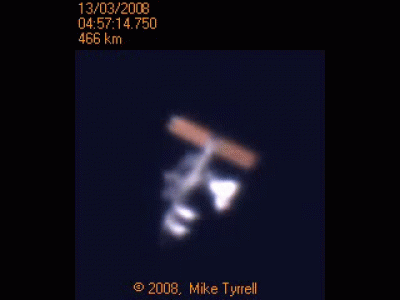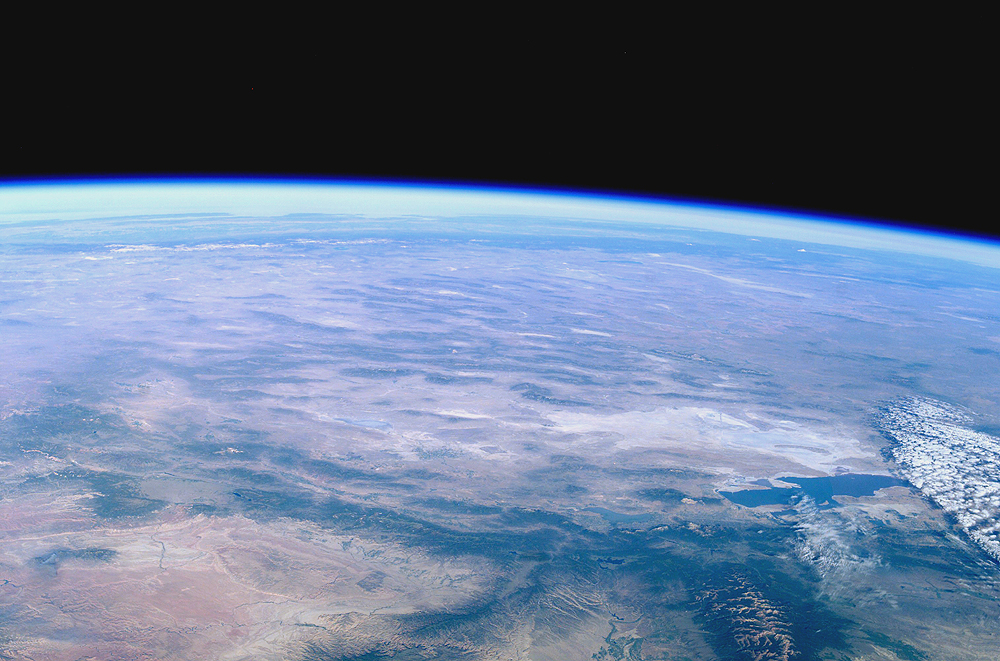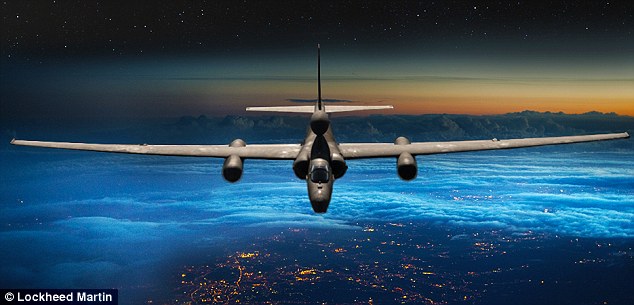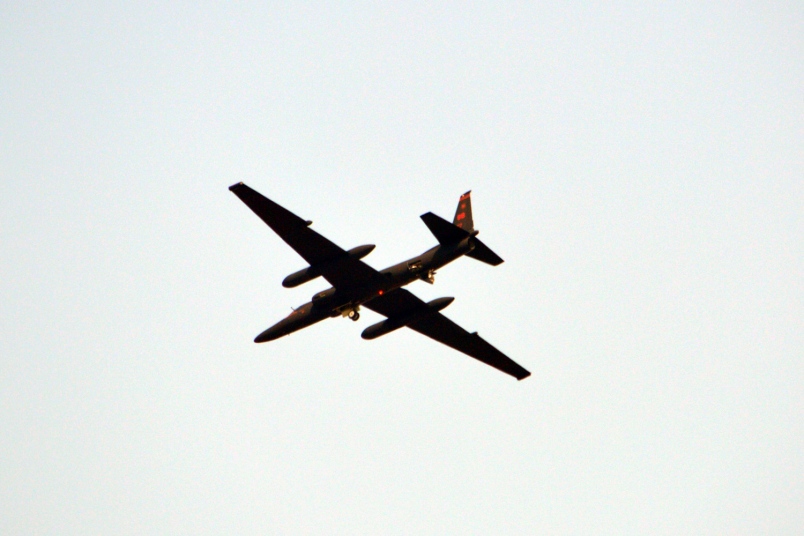The above sequence of images is the international space station. I took them on Saturday, May 28th 2016, at 9:28PM in the Northern California town of Shingle Springs (near Sacamento). They are not very good, but you can still make out the general shape of the ISS, with the central body, and the solar panels off to the side.
[Update] And here's one I took on Sept 29, 2016, from the same location, with a bigger zoom. Discussed here: https://www.metabunk.org/how-to-tak...nternational-space-station-with-a-p900.t7986/
While I took the photos purely out of personal interest, and as a photography challenge, it struck me after that it might be yet another piece of irrefutable evidence that the Earth is not flat. A brief search shows I was not the first to think of this:
Perhaps the reason why this evidence is ignored is that it's hard to duplicate. You can't exactly take out your iPhone and take these photos. The ISS is 250 miles above the surface of the Earth, and mostly looks like a bright star or planet moving across the sky.
However, it's quite possible to take recognizable photos of the ISS without a telescope. I took my images with a regular Canon DSLR with a 500mm zoom lens, you just have to use manual settings to get a reasonable exposure (F/8, 1/250th, ISO 400, handheld, prefocussed using Venus then switched to manual).
You can even take (better) photos with a $500 camera, like the Nikon P900, which has an 83x optical zoom:
http://www.diyphotography.net/international-space-station-captured-nikon-p900s-monster-zoom/
The ISS is particularly interesting as it would be impossible to fake on a "flat earth". It's appearance at any location is precisely predictable, but only if it's orbiting a globe shaped Earth at a certain speed, and at a certain altitude.
THE INTERNATIONAL SPACE STATION AS CAPTURED WITH THE NIKON P900’S MONSTER ZOOM
February 9, 2016 · Liron Samuels
Shortly after its announcement I read a review of the Nikon P900 super-zoom bridge camera, where the author excitedly said it can be used to shoot objects as far as ten miles away.
Judging by this photo of the International Space Station, captured by Naftali Maimon, I’m happy to say the P900’s 83x 2000mm-equivalent zoom is also capable of snapping photos of objects 250 miles away.
That’s right, this photo was captured with a $597 bridge camera!

The altitude in the above animation is exaggerated, but the path is basically what the ISS takes, and as it's so low it's only really close to any one particular area of the earth (in a way it can be easily photographed at a sensible time) every few weeks.
You can find out when it's going to be visible by subscribing the the NASA "Spot the Station" site, which can email you whenever there's going to be a good flyover, or just give you a list of all upcoming times when it will be visible, for example, near me:
https://spotthestation.nasa.gov/sig...ion=California&city=Cameron_Park#.V0x_X5MrLmE
This show (in red) the time of the flyover I photographed. The 9:25 time is when it is first visible over the horizon (10° above South West). It starts out as a disappointing slow moving dim dot, but quite quickly gets higher, brighter and faster. A "good" sighting would be anything over 45° Max Height, but the closer to 90° the better.
Notice that you can generally see the ISS three or four times a day, or at least once or twice when it's visible at night (usually low on the horizon, but still there). The effort required to fake these appearances all over the world would be impossible in itself, never mind being actually physically impossible.
[Minor note: the "Max Height" and where I say "high" or "low" refer only to the angle above the horizon. The actual altitude of the ISS is pretty much fixed at around 249 miles (400km), with a gradual downwards drift, and occasional adjustment burns of a few km every few months. But it does not vary visibly in altitude ]
Simpler evidence is the fact that the ISS, even to the naked eye, rises up over the horizon, gets bigger as it gets closer, and then descends over the horizon. All of this it does only in a way that works on a spherical Earth. If it were being faked with a flying model, then it would actually have to rise up from the ground 250 miles away from me, fly 250 miles up in the air overhead, then fly down the other side. Not only that, but the people 250 miles away from me would have to see this huge model fly up in the air. That would basically be the entire population of San Francisco. Obviously that did not happen, and they simply see it fly overhead like everyone else.
Of course there are many irrefutable proofs that the Earth is not flat. Ultimately one more isn't going to make a difference to the true-believer. There are people who simply think that everything in the world is fake to some degree or another. But for regular folk who have simply been taken in by the theory, then one more thing might be helpful. Especially if they can take the photos themselves.
You can see a collection of much better photos taken from the ground by Mike Tyrell, here:
http://www.astrospider.com/

For a discussion on how to take these photos, see:
https://www.metabunk.org/how-to-tak...nternational-space-station-with-a-p900.t7986/
Last edited:









